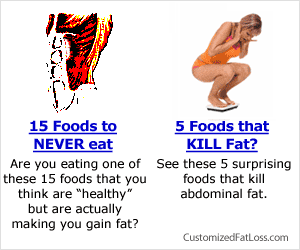Acai and Weight Loss
You may have heard about the power of acai berries and the effects they can have on weight loss. But is it for real or is it just hype? Discover the truth on it and why acai can help with your weight loss efforts.
So what are acai berries (pronounced a-sigh-EE) and where do they come from? They are a small purple/black berry that originated in the Amazon rainforest and are now harvested in Brazil. They fall into the ‘Super Food’ category, a food that produces an abundance of energy and health benefits. These benefits can be gained from the consumption of the acai berry itself or acai berry extract.
These small powerhouses contain a very powerful antioxidant, which is believed to help prolong life and keep blood pressure under control as well as producing many other health benefits. Studies have shown them to contain up to 33 times the antioxidant properties as red wine grapes.
Acai has two essential fatty acids known as omega 6 (linoleic acid) and omega 9 (oleic acid). Research shows that both omega 6 and omega 9 fatty acids help maintain HDL cholesterol levels. Besides the health benefits, what about weight loss? It can help to boost stamina and energy levels, which are both needed during exercise to assist in a weight loss program. They also contain high levels of fiber, which helps with digestion and cleansing of the digestive tract. Most people do not take in enough fiber. Especially during periods of dieting to lose weight, this extra fiber becomes extremely important.
The lack of fiber can cause bloating and undigested food to become lodged in the small intestines. The fiber in acai berries can help to cleanse the extra stuck food out of the digestive system thus causing a more efficiently operating digestive tract and weight loss. Just think if there was 5-10 pounds of undigested food stuck in your small intestines and you cleaned this out, you would be 5-10 pounds lighter. This may happen in the first few days of consuming acai and your weight loss efforts could be jump-started.
Acai can be found in different forms such as berries, pills, capsules, liquid and powdered forms. What are the possible side effects or precautions when using acai? It is always best to check with your doctor before undertaking any weight loss program or taking any kind of herb or supplement especially if you are taking medications.
If you are currently taking monamine oxidase inhibitors (MAOI) or angiotensis converting enzyme (ACE) inhibitors, you may not be able to take an acai product. If you have phenylketonuria (PKU), high blood pressure, thyroid disease/Graves’s disease, schizophrenia or bipolar disorder, you should consult with your doctor before taking it. Women who are pregnant or nursing should check with their physician first.
It is well worth looking into adding acai into your weight loss regimen.
You can learn more and get a free report “The Secrets To Easy Weight Loss This is just a few tips to help you lose weight and keep it off naturally. Get your free information at http://losingweightnaturesway.kteweb.com
Categories: Weightloss Tags: Acai, Loss, Weight
Monitoring Weight Loss
Quite often, after putting in laborious weeks in the gym to try and lose some weight, we are disappointed by the numbers staring back at us from the scale. WHY can I not lose weight after all of this? If this sounds a little too familiar to you then don’t worry; it’s probably just a simple case of not using all the right tools to track your progress.
Different weight-loss goals also have different needs. And even these come into play when you are trying to track your progress. For instance, if you are trying to perfect your hour-glass figure without really losing much weight, neither scales nor body fat percentage will be able to help you out. It thus becomes very important to use multiple methods to track your progress through your routine.
Measurements
Many people often forget the basics and some underestimate their effectiveness. Get the measuring tape, dust it off and put it to good use. Measure not only your target areas, but everything that you can. For instance, measure the bust (around the fullest part), chest (right under the bust), waist, hips, upper arms, thighs, calves and forearms. Remember that as much as we might be trying to work out a specific part of a body, other parts get affected too. So this way, you will soon realize which parts of your body are responding to your efforts and to what extent.
Body Fat
The entire story is not told by the scales alone. Some people have heavier bones, some are built broader while some might actually have more lean tissue than normal. Measuring your body fat percentage gives you a fairly accurate view of how much of your body is really made up of non-essential fats- those that need to be targeted. With a simple set of body fat calipers, one can easily measure and calculate the body fat percentage.
Scales
Though scales are not the most reliable indicators, they have their benefits. Scales are the easiest available equipment that we can measure our bodies with. And when combined with the body fat percentage, give us a number that we can work better with. Simply multiply your weight (e.g. 150 pounds) with the non-essential fat percentage (e.g. 20%) to understand how much weight you need to lose (150 x 20% = 30 pounds).
Waist to Hip Ratio
With specific goals, arise specific measurement needs. In case you want to improve your hips, you might be better served with this method. It is very simple to do at home and all it needs is a measurement tape and a calculator.
Procedure:
Measure the waist at the narrowest point and the hip at the widest point, both in inches or centimeters.
Divide the waist measurement by that of the hip.
According to the National Institute of Diabetes, Digestive and Kidney Diseases (NIDDK), a ratio greater than 0.8 for women and greater than 1.0 for men puts them at an increased health risk due to their fat distribution.
Clothes
We all have that pair of jeans that fit us two months ago and don’t anymore, or the sleeves of the top that fit too tight now. These and other clothes can be very strong indicators of our progress. Remember how certain pieces of clothing fit you and you won’t need anything else to tell you that you’re on the way to that bikini body.
Photographs
Snap a picture of yourself every week in a specific pose and compare these snaps over a period of time. And soon your camera will become a better friend than your mirror.
Additional Tips
Perform these measurements in the nude or with minimal clothing on.
Perform the checks at the same time of the day (ideally first thing in the morning) to avoid errors.
For females, keep in mind the extra water your body retains during your periods.
Keep a tabulated record of all your readings.
Do not check your progress daily. Do it every week or even every month. The body does not respond as fast as we might want it to.
Hannah Wright
For more information on how to lose weight visit http://loseweightmystyle.com
Categories: Weightloss Tags: Loss, Monitoring, Weight
Teen Weight Loss Formula
More and more teens these days are either a bit overweight or in real danger of becoming morbidly obese. They did not gain weight overnight and consequently they will not lose weight overnight either.
Although there are many ways to strip unwanted fat such as diet programs, diet pills, fat camps and so on, the best way to lose weight will always be through healthy eating and regular exercise. Here I am going to focus on the exercise part of the deal.
Exercise boosts a teens’ stamina and as this develops, it will speed up their metabolism as well. The end result of this is a chain reaction where the body now burns more calories than it did before causing the unwanted fat to drop off.
Studies have shown that provided there are no underlying health problems, there is no apparent downside to properly performed regular exercise. The worst that can happen is perhaps pulling a muscle by failing to stretch, or not leaving enough time for recovery before taking part in another session.
Teens don’t even have to spend a lot to lose weight as there are some exercises which can be done from home. For example, after stretching, of course, they can try some brisk walking or an early morning jog. Then there are sit ups and push ups or even just going up and down the stairs if they have them. Not the most glamorous methods I’ll agree but they’re cheap and they’ll certainly burn the calories.
If a teen has some money to spare they could always join a gym. Any gym worth its salt will have fitness trainers who will help the teen lose weight by working with them on a one to one basis and devising a program that suits their own individual needs and abilities.
Teens who don’t have the money to hire a personal trainer can work out themselves once they know how to use the gym. Alternatively, they could join a class such as aerobics, tai chi or yoga.
Teens who are a bit self conscious around other people but who would still like to enjoy these activities could get one of the many DVD’s available in any good store.
It is vital while exercising to drink lots of water. A general guide is 2 litres a day. Those who don’t may suffer from heatstroke or dehydration, the latter of which is bad news for someone trying to lose weight.
Before taking on any exercise program it is advisable to see a doctor. Teens having the confident mindset that they do will feel like they can achieve anything, but their bodies may not be up to it. It’s always best to do things slowly but surely at first and then gather momentum as time progresses.
If the teen is attending a school or college they may have access to sports facilities and exercise equipment. This is an ideal way of saving money whilst being able to participate in either organised sports or casual classes.
Healthy eating and a good diet are essential to any weight loss program but are rendered ineffective without the inclusion of regular exercise.
Remember this formula:- eat healthily + exercise well = lose weight.
Article Source: http://ezineseeker.com/?expert=Ian_Russell
More Weight Loss Articles
Categories: Weightloss Tags: Formula, Loss, Teen, Weight






-SMALL.gif)
